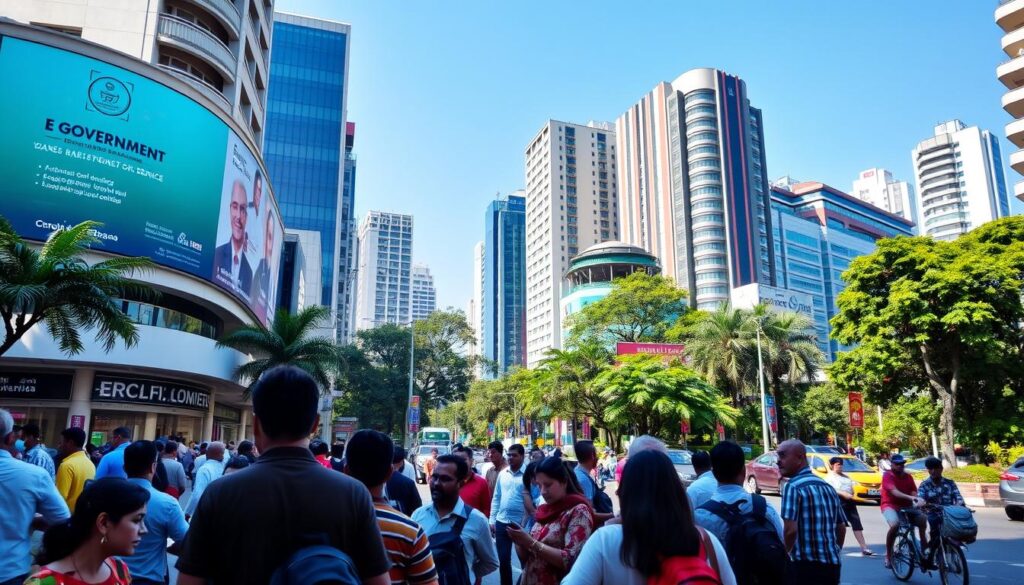Sri Lanka Cancels School Exams Due to Paper Shortage
Sri Lanka’s education system is in chaos due to the country’s worst economic crisis since 1948. The severe paper shortage has forced authorities to postpone term tests indefinitely. Millions of students are affected by this unprecedented disruption.
The nation of 22 million lacks essential imports like food, fuel, and medicine. Around two-thirds of Sri Lanka’s 4.5 million students can’t take exams. This paper shortage has paralyzed schools’ ability to assess learning.
Sri Lanka’s economic troubles have caused inflation to soar to 15.1 percent in February. Food prices have risen by a staggering 25.7 percent. The rupee’s value has dropped by over 30 percent, making matters worse.
The education sector is suffering greatly from this resource scarcity. Printers can’t get materials, leaving schools unable to give exams. The long-term effects on Sri Lanka’s youth are deeply concerning.
Sri Lanka’s Education System Disrupted by Economic Crisis
Sri Lanka’s economic crisis has severely impacted education, affecting millions of students. Resource scarcity, including paper shortages, has disrupted the academic calendar. This has hindered learning processes across the country.
The economic challenges have led to widespread disruptions in schools. Students face uncertain futures as their education suffers from these ongoing issues.
Millions of Students Affected by Exam Cancellations
Over 4.3 million students are affected by term test cancellations. These exams are crucial for assessing progress and grade promotion. The indefinite postponement has caused widespread student distress.
Continuous Assessment Process Hindered
Without regular evaluations, teachers struggle to gauge student performance. This setback may lead to long-term academic issues. Students miss out on critical feedback and growth opportunities.
The economic crisis has worsened education access disparities. Rising fuel prices make school transportation unaffordable for many. Only 45% of students have access to internet-based education.
The government faces challenges in allocating resources to education. In 2018, only 2.14% of GDP went to education. This falls short of the recommended 4-6% by Education 2030 Framework.
Without sufficient funding, the education system risks further decline. This could lead to a brain drain as students seek opportunities abroad.
Acute Paper Shortage Cripples Education Sector
Sri Lanka’s education sector faces a severe paper shortage due to dwindling foreign exchange reserves. The government struggles to import essential supplies, affecting millions of students. This scarcity has forced educators to seek alternative solutions for academic continuity.
Limited foreign exchange reserves have restricted paper imports. Printers and publishers can’t get materials for textbooks and exam papers. Schools now use different methods to keep learning going.
Government Struggles to Address Resource Scarcity
Sri Lanka’s government is trying to tackle the paper supply issues. They’re working to allocate limited resources and prioritize education needs. However, the economic crisis makes finding quick solutions difficult.
The government is considering several measures to address the problem:
- Encouraging the use of digital resources and e-learning platforms
- Partnering with international organizations to secure essential supplies
- Implementing conservation measures to minimize paper wastage
- Exploring alternative paper sources and domestic production capabilities
Educational Institutions Adapt to the Crisis
Schools in Sri Lanka are finding new ways to keep education going. They’re using digital tools and different teaching methods to overcome resource limits. Online platforms, e-books, and virtual classes help fill the gap left by paper shortages.
The paper shortage continues to strain the education system. Government and schools are working together to find long-term solutions. They aim to protect students’ academic progress during this ongoing crisis.
Economic Turmoil Leads to Academic Setbacks
Sri Lanka’s economic crisis has hit the education sector hard. A severe paper shortage has forced the cancellation of school exams for millions of students. This crisis will likely impact student learning and achievement for years to come.
The country’s financial woes stem from reduced tourism and agricultural exports. Sri Lanka’s debt to GDP ratio has reached a staggering 111%. A ban on chemical fertilizers has cost the tea industry $573 million.
The government struggles to address resource scarcity and repay debts. Meanwhile, the education sector continues to suffer. Sri Lanka has achieved self-sufficiency in poultry, but ensuring uninterrupted learning remains a challenge.
Officials are seeking ways to minimize disruptions to education. However, economic challenges persist. Inflation hit 18.7% in March 2022, and diesel fuel shortages are expected to worsen.
These academic setbacks will likely affect the future workforce and economic growth. Urgent measures are needed to address Sri Lanka’s economic turmoil and its impact on education.
FAQ
Why has Sri Lanka cancelled school exams for millions of students?
Sri Lanka has run out of printing paper due to a severe financial crisis. This shortage has forced the cancellation of school exams. The crisis has affected about two-thirds of the country’s 4.5 million students.
How many students are affected by the cancellation of term tests in Sri Lanka?
Around 3 million students can’t take their term tests. These tests are vital for grade promotion at year’s end. The cancellation impacts two-thirds of Sri Lanka’s student population.
What has caused the acute paper shortage in Sri Lanka?
Sri Lanka lacks foreign exchange reserves to buy essential imports. Printers can’t get paper and ink due to this currency crisis. This has led to a severe scarcity of printing materials.
How is the Sri Lankan government addressing the education crisis caused by the paper shortage?
The government is trying to find ways to assess students without paper tests. They’re working to minimize disruptions to education. However, economic challenges make this task difficult.
What are the long-term impacts of the education crisis in Sri Lanka?
The exam cancellations are just one part of Sri Lanka’s broader education crisis. This situation may harm student learning and achievement long-term. It could affect students’ future prospects and the country’s overall development.

